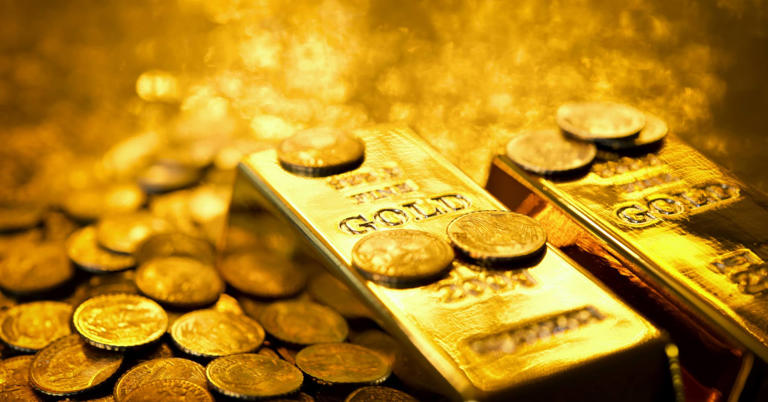Gold prices continued their upward surge, reaching yet another all-time high on Monday, driven by growing expectations of interest rate cuts by the U.S. Federal Reserve and the metal’s enduring status as a safe haven investment option. Analysts and market observers anticipate that the Federal Reserve may implement rate reductions as early as May or June, further fueling the momentum behind gold’s rally.
Gold prices continued their remarkable ascent on Monday, reaching yet another historic high, buoyed by a combination of factors including expectations of interest rate cuts by the U.S. Federal Reserve and gold’s enduring appeal as a safe haven asset.
Spot gold surged by an impressive 1.32% to hit an unprecedented level of $2,265.53 per ounce, while U.S. gold futures saw an even more substantial increase, trading at $2,286.39 per ounce. Joseph Cavatoni, a market strategist at the esteemed World Gold Council, emphasized the significance of this moment in the gold market, attributing the ongoing rally to the growing confidence among market speculators regarding the potential for Fed rate cuts.
The anticipation of rate cuts by the Federal Reserve, anticipated to occur either in May or June, has emerged as a dominant driving force behind gold’s recent surge. Despite recent data indicating a 2.8% year-on-year increase in the Fed’s key inflation gauge for February, which might suggest the potential for rate hikes, the central bank is widely expected to maintain its accommodative stance due to persistent inflation concerns.
While the Fed chose to keep rates unchanged at its recent March meeting, it reiterated its forecast for three rate cuts throughout the year. Historically, gold prices have exhibited an inverse relationship with interest rates, making the precious metal more appealing in a low-interest-rate environment.
In addition to domestic factors, overseas demand has also significantly contributed to the gold rally, particularly evident in China. There, private investors have increasingly turned to gold amidst lackluster performance in the real estate sector and broader economic weaknesses. China’s general economic malaise, coupled with underperformance in its stock market and currency depreciation, has bolstered demand for gold as a reliable store of value.
Central banks worldwide have been actively diversifying their reserve portfolios by increasing their gold holdings, citing concerns over geopolitical risks, domestic inflationary pressures, and the depreciation of the U.S. dollar. Cavatoni underscored the compelling case for continued central bank gold purchases, though he emphasized the need to monitor the size and duration of these purchases moving forward to gauge their long-term impact on the gold market.
